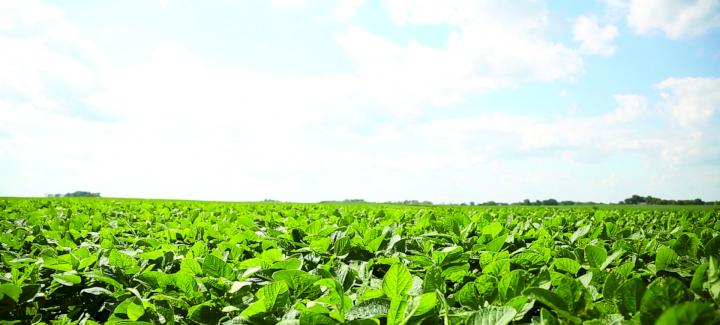What we have learned (especially in dry years) as the market share of Enlist E3® rapidly increases
January 2023
As we prepare for the release of the G series line of Stine Enlist E3® soybeans with our seed growers for 2023 seed production, this means we have seen the introduction of seven generations of Stine Enlist E3 soybeans and have witnessed the market share for these products rapidly increase. In fact, it’s anticipated that Enlist E3 soybeans will make up more than 50% of the market share in 2023. Fortunately, this also means that Stine reps have seen these products firsthand in several different field environments and varying weather conditions over the years, which allows us to provide valuable recommendations to our grower customers, especially when it comes to weed control.
“Even though we do not sell herbicides at Stine®, we continue to work closely with Corteva reps and our grower customers to make solid agronomic recommendations for their operations,” says Tony Lenz, technical agronomist for Stine. “From timely applications of 2,4-D choline, glyphosate and glufosinate to general best management practices, we’re well equipped to support our Enlist E3 customers in the 2023 planting and growing seasons. That said, it starts with taking a close look at the growers’ current environmental conditions, in addition to their extended weather forecast and how actively their weeds are growing throughout the season to help inform them of the best strategies for weed control.”
As Enlist E3 acres continue to grow, we have learned many valuable lessons, especially over the past few years when drought conditions have persisted.
“Growers often question the effectiveness of their weed control program in dry conditions,” says Lenz. “But we’ve worked with Enlist herbicides and the Enlist E3 trait long enough to know the program works even in drought years. Scott Jungman, Iowa Enlist field specialist for Corteva, has passed down some incredibly valuable information to help educate our grower customers on getting the most of their Enlist E3 acres with the Enlist herbicide program.”
Here are some of the top recommendations for our growers to consider as we near the 2023 planting and growing seasons.
Recommendation 1: Use the right timing
Don’t wait to make your Enlist applications. Enlist has spoiled some into thinking they can use the product as a “rescue” or a “spray last” type of program. Simply spray weeds when they are on label which will ensure weeds are smaller and have fewer growing points. Spraying later usually means we will hit hotter, dryer weather. This causes weeds to harden off with thicker, waxy cuticles that all herbicides have a tough time penetrating. Lastly, spraying later means weeds will be larger and could be above our 6" label requirements.
Recommendation 2: Use the right chemistries
If we do see dry conditions or later applications when weeds harden off, look at using crop oil concentrates or methylated seed oils as surfactants, and use them at full rates with the correct nozzles, such as AIXR Tee Jet or the AITTJ twin fans. Make sure to consult with your Enlist herbicide dealer or go to Enlist.com to review the section on qualified nozzles for use with Enlist One® or Enlist Duo® herbicides.
Recommendation 3: Use the right equipment and pressures
“Scott Jungman shared some very strong points on how to use your sprayer to control tough weeds like waterhemp,” says Lenz. “He says, ‘Take back your sprayer and use it for what it was designed to do. With dicamba, we used TTI nozzles that were first and foremost designed to put out ultra-coarse-sized droplets that didn’t drift, but at the same time didn’t give good weed coverage. Remember to use less coarse spraying nozzles that give better coverage.’” He also recommends using AMS, or ammonium sulfate, as a water conditioner as an additive to get more chemicals into the plant. Run pressures up to the higher end of the approved range. This could mean going as high as 50 to 60 psi. Last, and most importantly, raise spray pressure to no less than 20 GPA when you use Enlist and glufosinate. You may also want to go to 15 to 20 GPA when mixing Enlist with glyphosate.
Interested in learning more about Stine Enlist E3 soybeans and the Enlist system? Contact us or visit our website.
Related Articles
-

Use Stine’s XP® seed treatments to prevent early injury to your crops
December 2025 in Agronomy
-

Understanding Stine’s enhanced oil profile soybeans
December 2025 in Agronomy
-

Soil sampling sets the stage for spring
November 2025 in Agronomy
-

Corn production growth paves way for more high-performing Stine® hybrids
November 2025 in Agronomy



